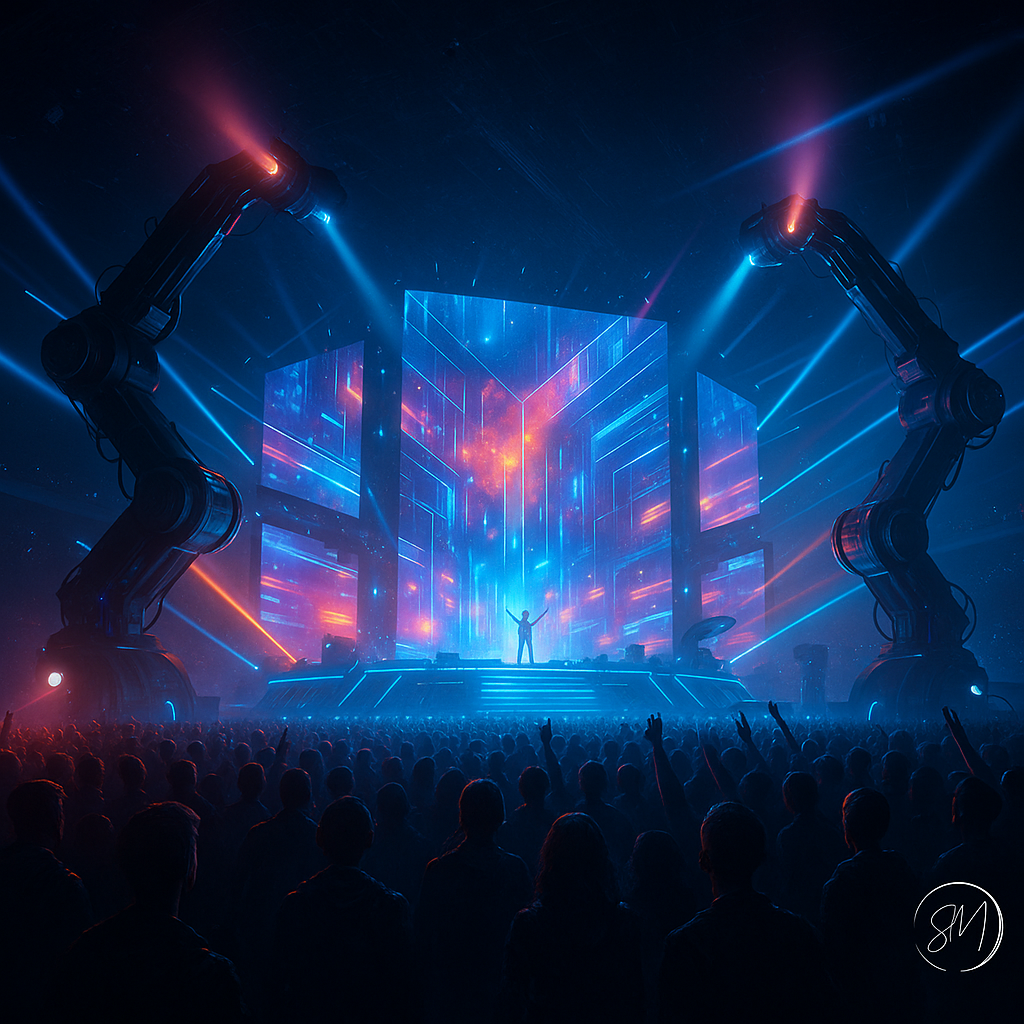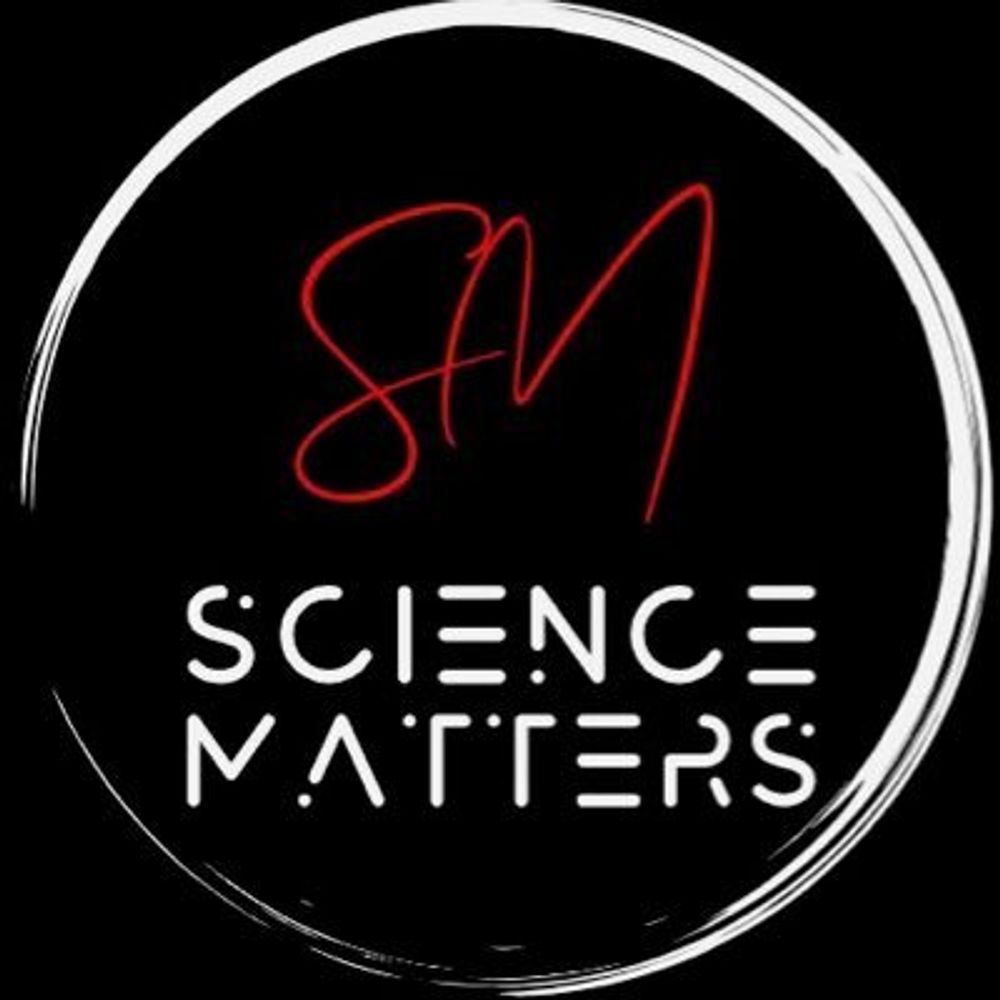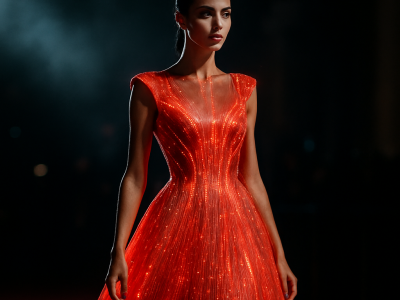As the final notes fade and the confetti settles in Basel’s St. Jakobshalle, the Eurovision Song Contest 2025 leaves behind more than just catchy tunes and memorable performances. Beneath the glittering surface lies a symphony of science and technology orchestrating every facet of this grand event. From cutting-edge stage design to complex voting algorithms, Eurovision 2025 exemplifies how science and innovation harmonise to create an unforgettable experience.
Held in Switzerland for the first time in over three decades, this year’s edition attracted a record-breaking 220 million viewers across 45 countries. With so many eyes on the show, the production team spared no effort in making it a technologically flawless feat.
Engineering the extraordinary
The stage at Eurovision 2025 is a marvel of modern engineering. Designed by renowned production designer Florian Wieder, the 2,000-square-metre platform incorporates over 750 square metres of LED screens, 4,500 light sources, and 150 speakers. Supported by a 100-tonne carrier system and interconnected with 8 kilometres of fibre optics, the setup ensures seamless transitions and immersive visuals.
Unlike a standard concert, each Eurovision performance requires bespoke staging. Mechanical lifts, automated rails, and magnetic locators are pre-programmed with each act’s requirements. Advanced simulation software is used weeks in advance to test the physicality of movements on stage, ensuring that props appear and disappear with split-second precision. Each act has only 40 seconds between performances for stagehands to reset the scene—a feat that demands near-military coordination.
To capture this, 22 broadcast cameras are synchronised in real time. A master control room staffed by over 40 technicians ensures live feeds are balanced for colour, brightness, and motion across a global audience watching on varied screens. According to broadcast engineer Lucien Frei from ETH Zurich, who was consulted on latency optimisation, “The data stream is enormous. We’re working with nearly 12 terabytes of content per hour during the broadcast.”
The acoustics of excellence
Sound quality is paramount in a live music event of this scale. Engineers employ advanced acoustical modelling to optimise audio delivery, ensuring clarity and balance throughout the venue. The integration of directional microphones, real-time sound mixing, and strategically placed speakers creates an immersive auditory experience for both the live audience and viewers at home.
The acoustics team collaborated with researchers from TU Delft and the University of Music and Performing Arts Vienna to model reverberation times and reduce echo hotspots. By installing beamforming speakers, which direct sound with pinpoint accuracy, the team managed to achieve consistent audio quality even in difficult corners of the arena.
In-ear monitors are custom-designed to help performers stay on pitch, and real-time pitch correction software is used sparingly to enhance vocals without creating a synthetic feel. Audio signals are routed through a complex web of digital soundboards monitored continuously during each performance, ensuring no sound is out of place.
Illuminating innovation
Lighting at Eurovision transcends mere illumination; it’s an art form driven by science. The use of programmable LED fixtures and intelligent lighting systems allows for dynamic visual effects that complement each performance. These systems are controlled via sophisticated software that synchronises lighting cues with musical beats, enhancing the overall spectacle.
Behind every lighting transition lies a massive library of lighting scripts programmed using DMX (Digital Multiplex) technology. Engineers use 3D pre-visualisation tools to simulate lighting effects before a single bulb is activated. The pre-visualisation room in Basel operated 24/7 in the week leading up to the contest, with teams working in shifts to programme over 3,000 lighting cues.
In 2025, Eurovision also introduced interactive lighting that responds to crowd movement. Using LIDAR sensors embedded in the floor, the lighting system captures the audience’s motion and adjusts hues and brightness in real time, creating a dynamic feedback loop between performer and crowd.
Algorithmic adjudication
The voting system at Eurovision is a complex interplay of mathematics and psychology. Each participating country awards two sets of points: one from a professional jury and another from public televoting. This dual system aims to balance expert opinion with popular preference, reducing biases and promoting fairness.
Researchers from the University of Oxford and KU Leuven have studied the voting patterns using network theory. In their 2023 paper published in Computational Social Networks, Dr. Emilia Schaefer and her team identified persistent voting blocs, such as the Nordic cluster and the Balkan alliance, and proposed modifications to reduce bloc dominance.
Machine learning models were employed to detect voting anomalies in real time. Eurovision partnered with the AI research group at EPFL (Swiss Federal Institute of Technology Lausanne) to develop an outlier detection tool that flags statistically improbable results. “It acts as a referee,” explains Dr. Jean-Paul Vernier, lead data scientist. “If a country suddenly gives top marks to a historically low-scoring neighbour, our algorithm prompts a manual review.”
It acts as a referee. If a country suddenly gives top marks to a historically low-scoring neighbour, our algorithm prompts a manual review.
-Dr. Jean-Paul Vernier
AI: The new composer
Artificial intelligence is making its mark on the Eurovision stage. The AI Song Contest, inspired by Eurovision, challenges teams to create songs using AI-generated melodies and lyrics. This fusion of technology and creativity pushes the boundaries of music composition, offering a glimpse into the future of songwriting.
The 2025 competition saw the debut of semi-AI entries. The Estonian act incorporated lyrics generated using GPT-style language models trained on Eurovision’s lyrical corpus from 1956 to 2023. Meanwhile, Austria presented an AI-composed melody arranged by a human producer, combining human emotion with algorithmic creativity.
Dr. Tanja Mueller from the University of Music and Performing Arts Graz is one of the leading researchers on computational creativity. Her recent publication in Journal of New Music Research argues that AI can co-create emotionally resonant music, particularly when guided by human narrative frameworks. “We are not replacing composers,” she notes, “but expanding the palette of inspiration.”
Sustainability in the spotlight
Eurovision 2025 sets a new standard for eco-conscious event planning. Guided by the Green Motion label, organisers implemented over 100 measures to reduce the carbon footprint, including energy-efficient lighting, sustainable materials, and waste reduction strategies.
The stage structure was built using modular recycled aluminium and biodegradable rigging. Carbon offsetting was employed through tree planting programmes in collaboration with Swiss non-profit MyClimate. Attendees were encouraged to use Basel’s extensive public transport system, with free travel passes provided with each ticket.
Water refill stations replaced bottled water vendors, reducing plastic use by an estimated 4 tonnes over the week-long festivities. Catering contracts included stipulations for locally sourced ingredients and mandatory composting. Basel’s commitment to net-zero emissions by 2037 made it a fitting host city for an event striving to set benchmarks for sustainability.
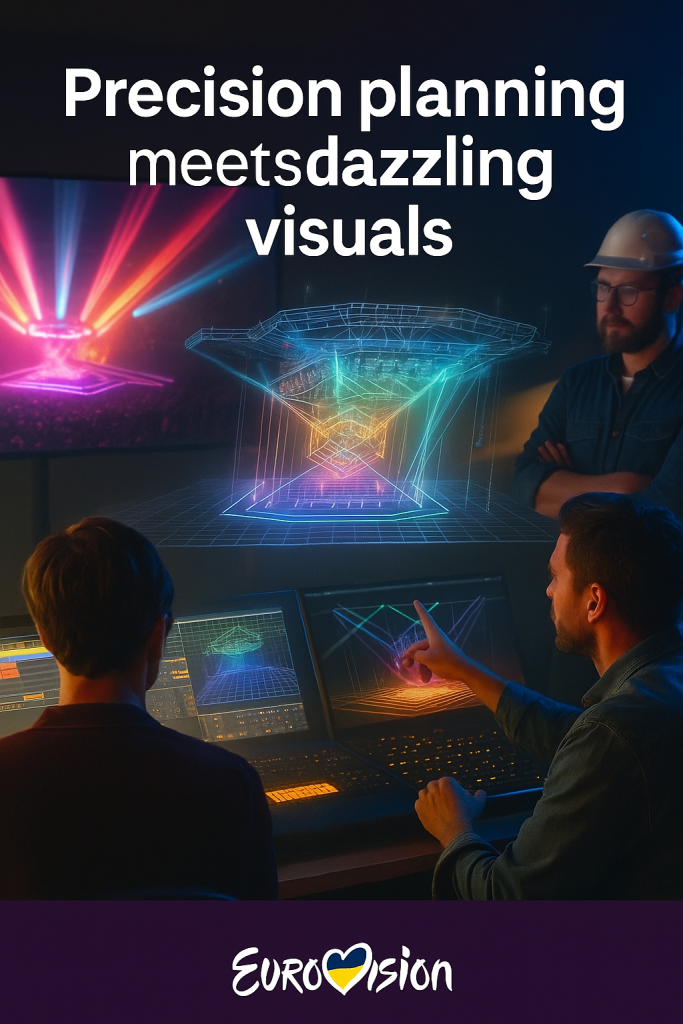
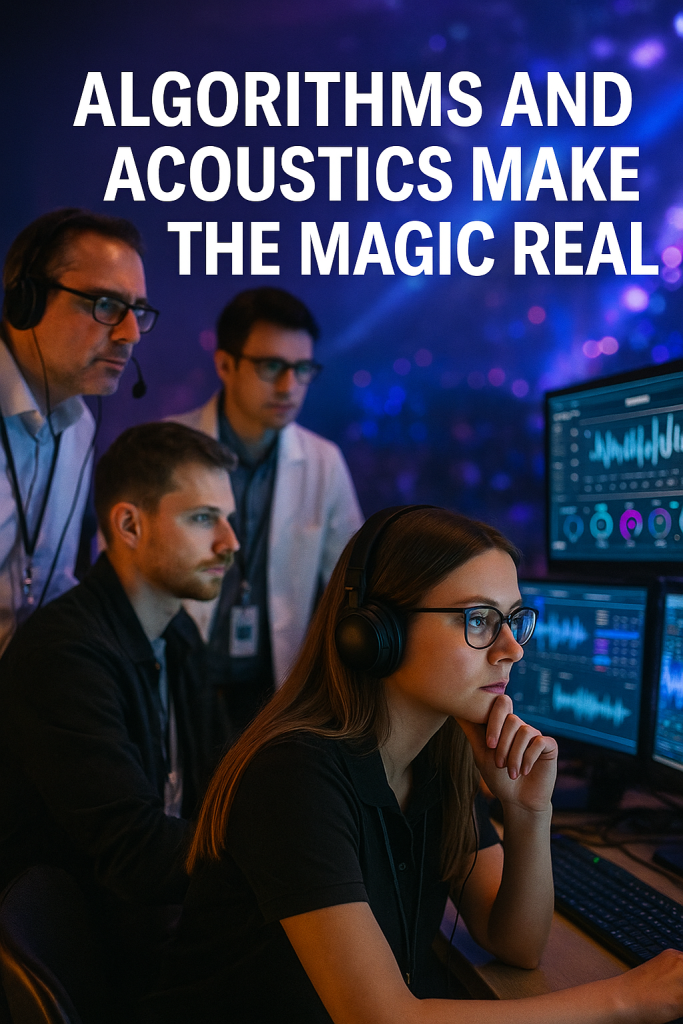
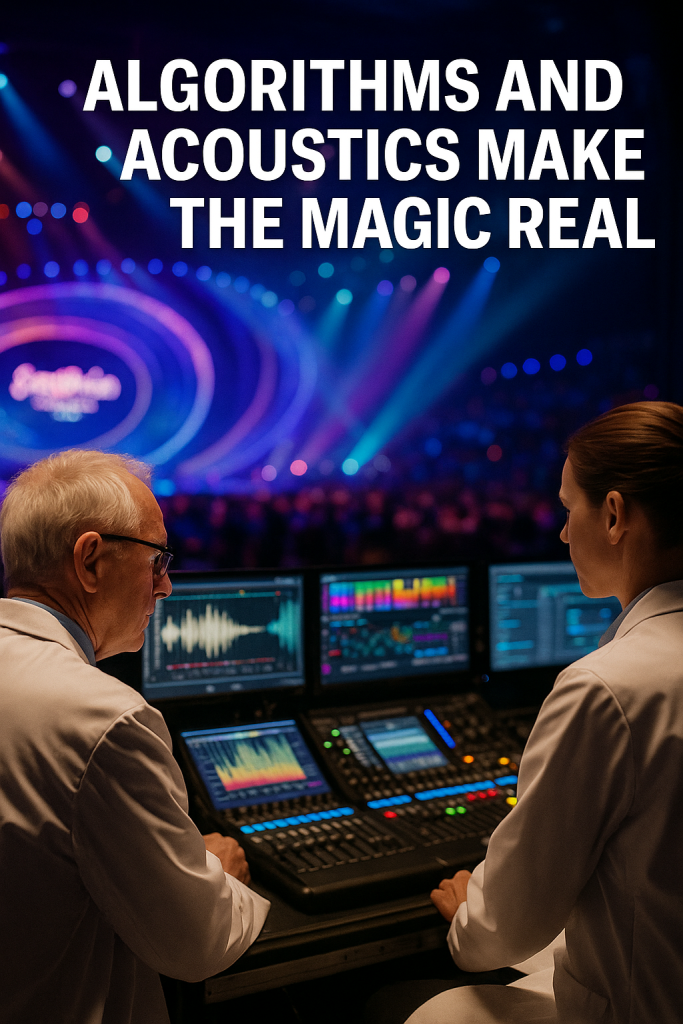
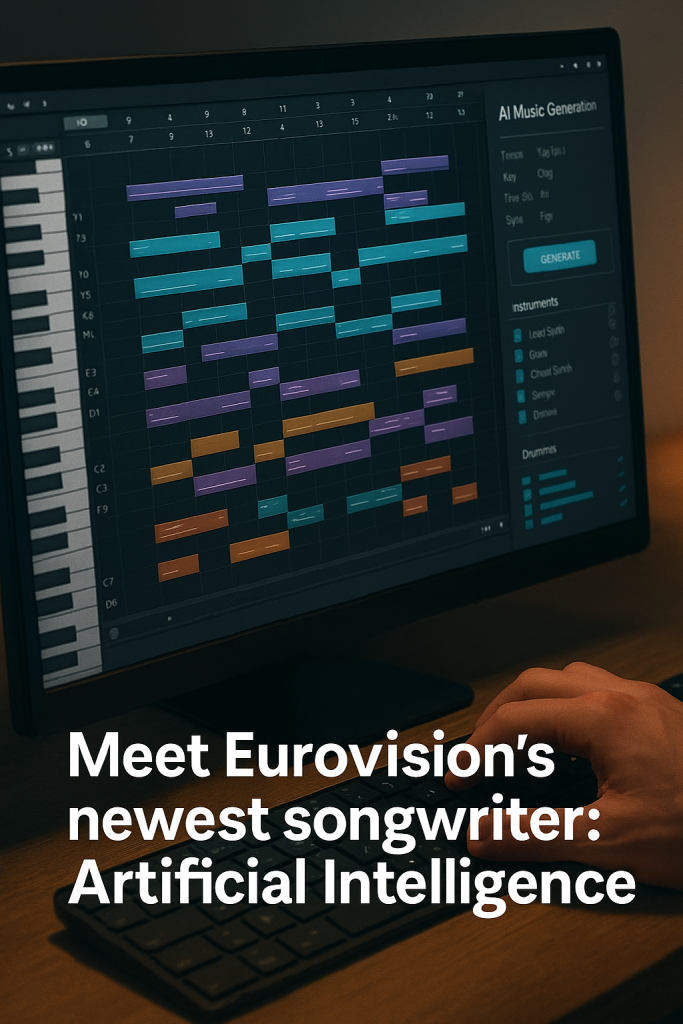
The neuroscience of music
Music’s impact on the human brain is profound. Studies reveal that engaging with music activates multiple brain regions, enhancing memory, emotion, and social connection. The diverse array of performances at Eurovision stimulates these neural pathways, fostering a sense of unity among viewers.
In a landmark study published in Neuroscience & Biobehavioral Reviews, Professor Sofia Rinaldi from King’s College London showed that synchronised musical experiences, such as those in live concerts, increase the release of oxytocin—the bonding hormone. “It’s like a social glue,” she notes. “When we watch Eurovision together, our brains are literally syncing up.”
Moreover, the multicultural nature of Eurovision encourages cognitive empathy. Viewers exposed to different languages, styles, and cultures in rapid succession experience heightened activity in brain areas associated with curiosity and tolerance. Music, in this case, becomes more than entertainment; it becomes a neurological bridge across nations.
A call to curiosity
Eurovision 2025 exemplifies the harmonious convergence of science, technology, and art. As we marvel at the dazzling performances, it’s worth reflecting on the intricate systems and innovations that make such an event possible. Whether it’s the physics of acoustics, the choreography of lighting, or the algorithms that guide public opinion, science is the silent star of the show.
So the next time you find yourself humming a Eurovision tune, consider the countless engineers, scientists, and researchers who made that moment possible. And ask yourself: how else might science shape the future of music?
References
Mantzaris, A. V., Rein, S. R., & Hopkins, A. D. (2018). Preference and neglect amongst countries in the Eurovision Song Contest. Journal of Computational Social Science, 1(2), 377–390. https://doi.org/10.1007/s42001-018-0017-4
Exploring the design of generative AI in supporting music-based reminiscence. (2024). In Proceedings of the CHI Conference on Human Factors in Computing Systems. https://doi.org/10.1145/3613904.3642800
A coordinate-based meta-analysis of music-evoked emotions. (2020). ResearchGate. https://www.researchgate.net/publication/348084877_A_coordinate-based_meta-analysis_of_music-evoked_emotions

